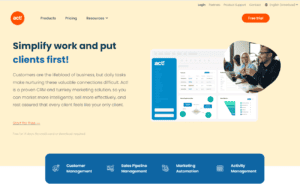What Is A Sales Training Program?

Sales training programs are designed to help sales professionals learn how to sell effectively. They can cover various topics, such as customer service, pitching techniques, and closing techniques. Sales training can also help salespeople develop critical skills, such as negotiation and problem-solving.
Sales training is an integral part of any successful business. A good sales training program will help new sales representatives learn how to sell, how to build relationships with customers, and how to handle difficult situations. Sales training can also help improve the sales team’s overall performance.
Sales training programs can help you improve your sales skills. There are many different types of sales training programs, including on-the-job training, classroom training, and self-study programs.
Why Is A Sales Training Program Important?
Sales training is essential for two reasons. First, it provides employees with the skills they need to be successful sales professionals. Second, sales training can help organisations manage and improve their sales force effectiveness. Sales training programs can be tailored to meet the specific needs of a business.
A well-designed sales training program can help employees learn how to prospect, identify and qualify leads, create proposals, negotiate contracts and close deals. Sales training also can teach workers how to develop customer relationships and use customer data to improve marketing efforts.
Sales training can help businesses measure the effectiveness of their sales teams. By tracking employee performance, businesses can identify areas where they need to focus their training efforts. Additionally, a well-run sales training program can help organisations find qualified new hires and retain existing employees.
5 Steps In Creating Successful Sales Training Program
Determine Objectives and Key Performance Indicators (KPIs)
Sales training is essential for any organization hoping to increase sales. However, it can be challenging to know what goals to set for a sales training program and how best to measure its success. It is important to define objectives and key performance indicators (KPIs) for a sales training program before starting. This will help ensure that the program is focused and meets targets.
Objectives should be specific, measurable, attainable, relevant and time-bound. Key performance indicators should track whether the objectives are being achieved. To create practical objectives, consider what skills and knowledge your employees need to be successful in the sales process. Training programs should also focus on developing key performance indicators that reflect employee success. These metrics can include increases in productivity or revenue. Once objectives and KPIs have been established, it will be easier to design a successful Coporate sales training program.
Determine Performance Gaps
Building a successful sales training program requires identifying performance gaps between your current sales team and your desired outcome. Identifying where current sales teams fall short will help you develop targeted and effective interventions to close the gap.
Identifying performance gaps enables you to measure the effectiveness of your sales training program to make necessary adjustments. Once you have identified the areas where your trainees need improvement, you can focus on effectively teaching these skills.
To be effective, any sales training program should closely resemble how your sales team currently operates. This means understanding how your team sells, what obstacles they face, and how best to overcome them. Once you have a good understanding of how your team sells, you can design exercises and lessons that mirror these processes.
[convertful id=”197361″]
Always Make Materials Accessible
To build a successful sales training program, you must make materials accessible. This includes making sure that all materials are available in an electronic format so that they can be accessed anywhere, anytime. This also means creating manuals and course materials that are easy to read and follow. In addition, you should provide training sessions that are interactive and engaging so that participants will be motivated to learn more about the products or services they are selling.
There are a few things that you can do to make materials more accessible for your employees: Design materials in an easy-to-read format. Use fonts that are large and easy to read, and use graphics sparingly. Ensure all materials are available in alternate formats, such as audio files or PDFs. This will allow employees with disabilities access to the training material as well. Provide copies of all materials to employees before they start training. This will help them get started immediately and avoid any confusion or frustration while they are learning.
Boost Retention
As a business owner, you know that retaining top sales talent is essential to your success. But building a successful sales training program can be difficult – especially if your employees leave after just a few months on the job.
Building a successful sales training program requires boosting retention rates. If your employees leave within the first 12 months of joining your company, it won’t be easy to implement a sales training program successfully. However, if your employees stay with you for more than 12 months, they are more likely to be successful when selling products or services.
To achieve this goal, you must offer compelling benefits to employees beyond just sales training. These benefits can include competitive pay and discounts on products and services, flexible work hours, and employee recognition programs. In addition, make sure that your sales training program is aligned with the company’s overall business strategy.
Always Ask For Feedback
Sales training can be a precious tool for employees to improve their skills and knowledge. However, without feedback from participants, it’s difficult to determine the effectiveness of a training program. Feedback should be solicited at every stage of the sales process to ensure that trainees learn the necessary skills and techniques. Here are some tips for asking for feedback effectively:
Establish a communication plan with your participants beforehand. Make sure you have a clear timetable for providing feedback, as well as a method for collecting data and answering questions. This allows everyone involved to know what’s expected of them and when they can expect it.
Be clear about what you’re looking for in feedback. Avoid giving vague or ambiguous instructions, as this will make it difficult for participants to provide accurate information.
Conclusion
In conclusion, creating a sales training program can be a daunting task, but with the right tools and strategies, it can be a successful endeavour. By using an effective sales training methodology, you will be able to ensure that your employees are prepared to sell and close more deals. Furthermore, by creating a tailored program that focuses on the specific needs of your business, you can maximise its effectiveness.
FAQs
What is the design of a sales training program?
To design an effective sales training program, you need to know three things: where your team is now, where you want it to be, and how you plan to get there. Start by assessing your current reality accurately.
When designing a training program, what are the four most important things?
- Determine what the learner needs to know to achieve the learning objective.
- Determine what the learner needs to be able to do to achieve the learning objective.
- Make sure the learning content is organised logically.
- The learner should be able to demonstrate what they have learned.
In sales, what is CRM training?
CRM refers to a business approach to managing and maintaining relationships with customers, clients, partners, and prospective customers.






